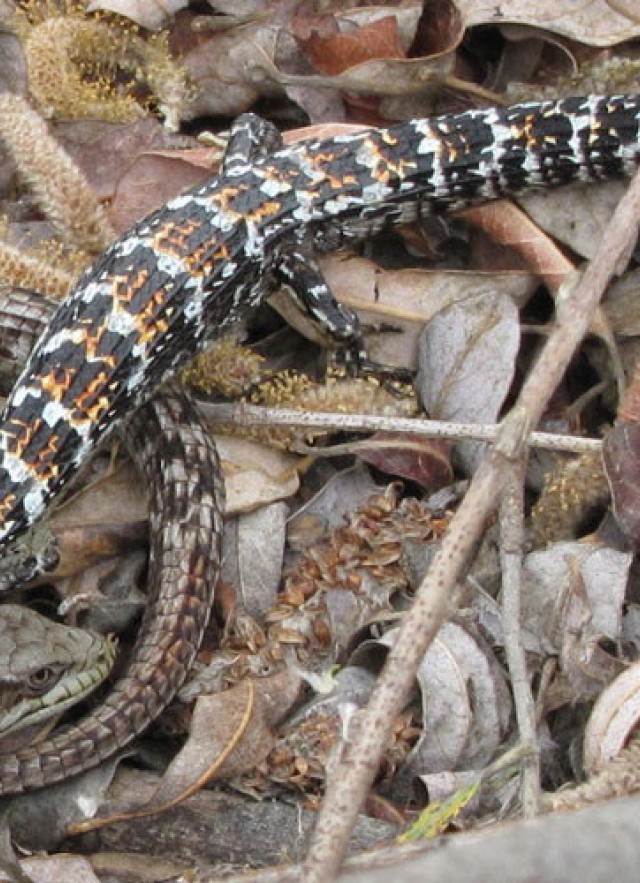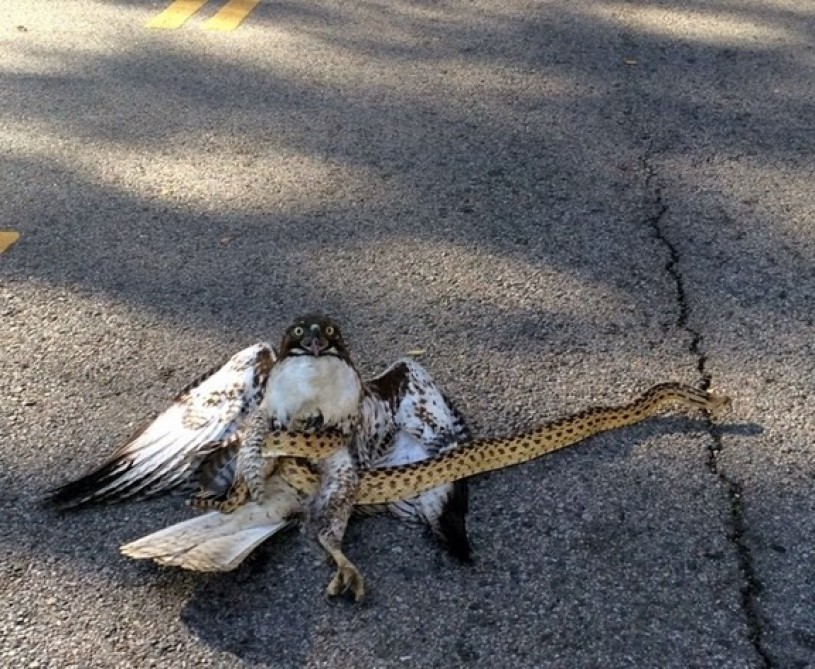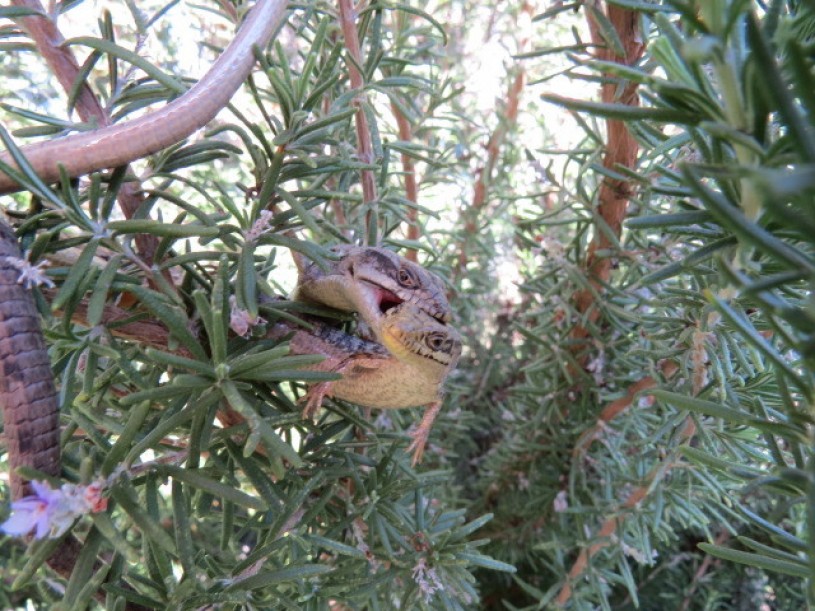Studying Lizard Love Through Citizen Science
Because this region is so big and so much of it is private property, we enlist people (aka community scientists) all across the region to help us study the local biodiversity.


Much of this community science research focuses on understanding where species can be found. But photographs can also document interesting and unusual behaviors. For example, photographs from a few lucky community scientists documented some incredible predation fails. In science jargon “predation fails” is termed antipredator behavior, but the word “fail” seems to better capture the look of this hawk that incorrectly assumed a gopher snake would be an easy meal.
Right now, we are entering my favorite time of year for using community science to document interesting behaviors in a local species.
It’s alligator lizard mating season, and we need YOUR help in studying their breeding biology! I bet you’ve never heard a sentence like this before. But we are not kidding. We really do need your help and the help of other community scientists across Southern California to document mating behavior in alligator lizards.
What are we talking about?
In the late Winter and early Spring, alligator lizards mate. Alligator lizards are found throughout Southern California except in the deserts and are the most widespread lizard species across the Los Angeles Basin. Many Angelenos have these lizards in their yards, even though they may not see them very often. Be happy if you do have alligator lizards around because they are a gardener’s best friend, eating slugs, spiders, caterpillars, and lots of other insects and small invertebrates. These lizards prefer cooler, moister conditions so you won’t find them prominently basking on rocks like some of our local lizards (this is why you may not see them even when they are in your yard); instead they will be more hidden under plants and debris, or in cooler, grassy areas along streams and in canyon bottoms, or even using their long tails to help them climb up into bushes in search of food.
Starting as early as February, alligator lizards in our area start mating. Many people who see their courtship behavior might think it is a fight or even cannibalism, but in fact this is alligator lizard love. The male bites the female on her neck or head, and they may stay in this position for more than a day. It’s possible that they stay paired up for so long because the female is testing the strength of the male, but more research needs to be done on this. If they are not disturbed by a predator or other male suitor, usually the pair ends up mating.

Last year, I realized that observations submitted to the Reptiles and Amphibians of Southern California (RASCals) project could be used to study the breeding behavior of these lizards. We put out our first call for such observations (read last year’s blog post here), and we have tallied 24 such observations submitted to RASCals so far. Based on these 24 observations, breeding in Southern California can be as early as February 9, or as late as April 22, but appears to peak between mid-March and early April.
As we accumulate more records this year and in coming years, we can ask questions like how much variation is there in the timing of the breeding from year to year. Does the breeding season start earlier further south? Does it start earlier at lower elevations? Do lizards in urban areas breed at the same time as lizards in rural areas?
Of course, understanding the breeding biology is dependent on having lots of data points. This is why we need your help. If you see courting or mating alligator lizards, please take a photo and submit it to the RASCals project. You can do this through iNaturalist, or by emailing the photo to rascals@nhm.org, or by using #NatureinLA on social media. And while you are searching for those mating alligator lizards, we encourage you to send in photos of any other reptiles and amphibians you come across.